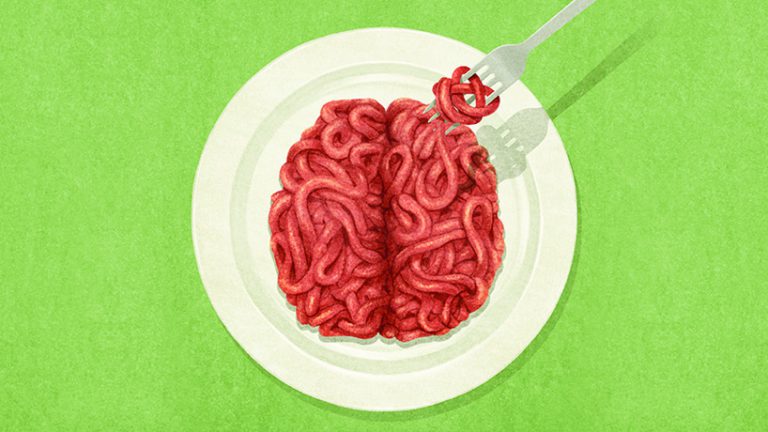Is there any story more delicious than a proud man’s fall from grace?
Discredited food psychologist Brian Wansink, a Cornell professor and formerly the head of the USDA’s Center for Nutrition Policy and promotion, built his career by fanning the flames of public interest in his gimmicky food lab projects. As a frequent fixture in popular news stories and waiting-room magazines, Wansink benefited from the attention that the press lavished on his work. His flashy studies about how the size of a container can make people mindlessly eat more stale movie popcorn, or slurp bottomless bowls of soup, made for interesting reading. It seemed to confirm what people wanted to hear about nutrition, and squared with the rise of mindfulness-meditation in the industrialized West. Wansink reaped substantive rewards from this fame; in 2005, his Food and Brand Lab moved from the University of Illinois to a more lucrative, high-profile position at Cornell University. One year later he published his first bestseller, Mindless Eating.
With a single blog post in 2016, one that offered details on his research methods, Wansink unraveled his seemingly rock-solid legacy, leading to the retraction of dozens of famous studies he has published over the years—as well as the loss of his job at Cornell University. And now the journalists who once lavished praise on Wansink’s work have a new viral story—one that’s arguably juicier than all those glowing articles about his research.
Wansink’s work no longer has much to offer in terms of evidence-based research. But as a cautionary tale, his story may be useful.
What happened?
After Wansink published a blog post that inadvertently revealed the dubious ways in which he asks his students to approach his lab’s statistical analysis, researchers in his field began to scrutinize the scientist’s published work. They found many inconsistencies, inaccuracies, and problems with data collection and analysis, of which Wansink seemed entirely unaware. When challenged, Wansink was dismissive, though he eventually took down the blog post.
One such researcher, Tim van der Zee, presented his findings to Cornell’s Office of Research Integrity and Assurance. But the story of Wansink’s academic misconduct didn’t gain traction until a BuzzFeed reporter published an exposé in February 2018. Cornell was forced to investigate the claims. By the time the Journal of the Medical Association began retracting some of Wansink’s most famous studies, the writing was on the wall. By September of that year, the disgraced research had resigned, effective June 2019.
The Credibility Crisis
Although he has fervently denied any wrongdoing, Wansink’s work is no longer considered scientifically sound. But his actions have had repercussions far beyond his own professional reputation. Wansink’s discredited research inspired viral news stories, informed government policy, and shaped federal guidelines. It is on the résumés of dozens of graduate students who worked with him over the years, and whose reputations are also on the line. Moreover, Wansink’s bad research earned—and has now betrayed—the public’s trust, which many commentators believe will further erode the reputation of science as a discipline. In the era of so-called fake news and climate-change denial, scientists are keen to build trust with the general public. High-profile cases of academic misconduct, whether intentional or not, accomplish exactly the opposite, leading some of the public to consider scientists as incompetent or untrustworthy.
Journalists at Vox, NPR, and elsewhere were quick to ponder the implications of Wansink’s misconduct for science professions, questioning the ethics of how scientific research is reported. Wansink came from a marketing background—he is not a trained food scientist—and his understanding of what makes a story sparkle likely informed the viral quality of his studies. Many onlookers have suggested that academic journals are promoting the wrong values by favoring high-concept studies to hook an audience. Good science isn’t necessarily flashy or entertaining. Encouraging researchers to chase eye-catching headlines is, at best, misguided. At worst, it may lead researchers to exaggerate or even fabricate their results.
But many commentators have failed to take their analysis a step further to consider the possibility that mainstream journalism, and perhaps even the people who consume it, share a certain blame in allowing this shoddy researcher to thrive. Are viral news articles eroding the public discourse? And if so, what is the path to turning things around? With Wansink out of academia—and, presumably, the public eye—mainstream media will need to find new experts to lecture the public about junk food. Let’s hope that, this time around, they avoid feeding readers so many empty calories.







